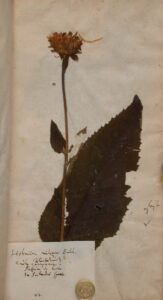Application
Alfalfa was one of the most widely used medicinal plants in Europe in the 1800th century. The root was used for female diseases, coughs, flatulence, snakebites, and as a diuretic.
The root contains inulin. It is a type of sugar that is also found in Jerusalem artichokes. Inulin is well tolerated by diabetic patients, unlike most other types of sugar.
The volatile oils, alantolactone and isoalantolactone in the root are effective against bacteria and fungi.
The powdered root is effective against intestinal worms. A side effect is that the root also has a positive effect on the digestive problems that are accompanied by worm infestations.
The smoke from the burning plant has been used to repel mosquitoes and fleas.
The root has been used as a dye plant. It produces a blue color if the clothes are first stained with urine and potash.
The root is used today for asthma, bronchitis and other lung conditions. It is also used in the treatment of pinworms, as a digestive tonic and as a flavoring in vermouth.
Ingredients
Volatile oils (alantolactone and isoalantolactone), inulin, sterols, resin, pectin, mucilage.

Inula helenium L.
Photo of page in Joachim Burser's herbarium.

